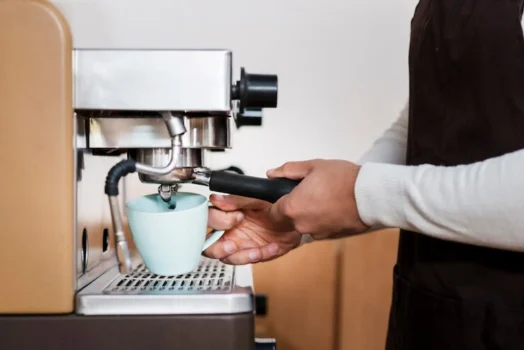Pipes are an essential part of every home. They carry water, remove waste, and run smoothly our daily lives. However, they can also be a source of problems. Leaks, clogs, and bursts are common issues that every homeowner faces at some point. Luckily, many of these problems have simple solutions. This blog post will discuss quick fixes for common pipe problems. These tips can save you time, money, and stress.
Leaky Pipes
A leaky pipe is a common issue that can lead to water damage if not fixed promptly. Here’s how you can tackle this problem.
Identify the Leak
First, locate the leak. Look for water stains, drips, or puddles. Check under sinks, around toilets, and along pipes in your basement or crawl space.
Tighten Connections
Once you find the leak, see if tightening the connections solves the problem. Use a wrench to gently tighten any loose nuts or bolts. Be careful not to overtighten, as this can damage the pipes.
Use Pipe Tape
If tightening doesn’t work, pipe tape can be a good solution for pipe repairs. Wrap the tape around the leaky area. This provides a temporary fix until you can get a more permanent solution.
Apply Epoxy Putty
For more serious leaks, epoxy putty is another option. Knead the putty until it’s pliable, then press it over the leak. Let it harden according to the package instructions. This should stop the leak until you can replace the damaged section.
Clogged Drains
Clogged drains are another frequent problem. They can cause water to back up, leading to unpleasant smells and potential water damage. Here are some quick fixes.
Use a Plunger
A plunger is a simple tool for clearing many clogs. Carefully place the plunger over the drain and press down hard. Then pull up quickly. Repeat this several times to create suction that can dislodge the clog.
Pour Boiling Water
Sometimes, boiling water can dissolve minor clogs. Slowly pour a pot of hot water down the drain to help break up grease or soap buildup.
Baking Soda and Vinegar
For a natural solution, try baking soda and vinegar. Pour half a cup of baking soda down the drain, followed by half a cup of vinegar. Cover the drain and let the mixture fizz for about 15 minutes. Then, flush with hot water. This can help clear stubborn clogs.
Use a Drain Snake
A drain snake is a flexible tool that can reach deep into pipes to remove clogs. Insert the snake into the drain and twist it to catch the clog. Pull it out and dispose of the debris. Repeat as needed until the drain is clear.
Burst Pipes
Burst pipes are a serious issue that can cause extensive water damage. Quick action is essential to minimise the impact.
Shut Off the Water
If a pipe bursts, the first step is to shut off the water supply. Locate the main shut-off valve, usually found in the basement or near the water meter. Stop the flow of water by turning it off.
Drain the System
Next, drain the system by opening all faucets and flushing toilets. This will remove any remaining water in the pipes and reduce pressure.
Apply a Temporary Fix
While waiting for a professional, you can apply a temporary fix. Use pipe tape, a pipe clamp, or even a piece of rubber and a clamp to seal the burst area. This will help contain the leak until a permanent repair can be made.
Insulate Your Pipes
Make sure your pipes are properly insulated to prevent future bursts. This is especially important in cold climates, where freezing can cause pipes to burst. Use heat tape or foam pipe insulation to keep your lines safe from high and low temperatures.
Low Water Pressure
Daily tasks like taking a shower and washing the dishes can be annoying when the water pressure is low. Here are some simple fixes.
Check for Leaks
First, check for leaks. Even a small leak can reduce water pressure. Fix any leaks you find to improve pressure.
Clean Faucets and Showerheads
Mineral buildup can clog faucets and showerheads, reducing water flow. Remove the aerator from the faucet or the showerhead and soak it in vinegar overnight. Rinse it well and reattach. This should improve water flow.
Check the Main Valve
Sometimes, the main water valve isn’t fully open. Make sure it’s turned all the way on. This can instantly improve water pressure.
Inspect the Pressure Regulator
Some homes have a pressure regulator that controls water flow. If it’s malfunctioning, it can cause low pressure. Adjust or replace the regulator if needed.
Noisy Pipes
Noisy pipes can be annoying. They might bang, rattle, or hum. Here’s how to quiet them down.
Secure Loose Pipes
Loose pipes can move and make noise. Secure them with pipe clamps or straps to keep them in place.
Install Water Hammer Arrestors
If you hear banging when you turn off the water, it might be a water hammer. Install water hammer arrestors to absorb the shock and reduce noise.
Add Insulation
Pipes can also make noise when they expand and contract. Adding insulation can cushion the pipes and reduce noise.
Adjust Water Pressure
High water pressure can cause noisy pipes. Check the pressure and adjust it if needed. A pressure regulator can help maintain the right level.
Conclusion
Dealing with pipe problems can be stressful, but these quick fixes can help you manage common issues. Whether it’s a leaky pipe, clogged drain, burst pipe, low water pressure, or noisy pipes, these tips can save you time and hassle. Remember, some problems require professional help, especially if they’re severe. Regular maintenance and quick action can keep your plumbing system running smoothly.




